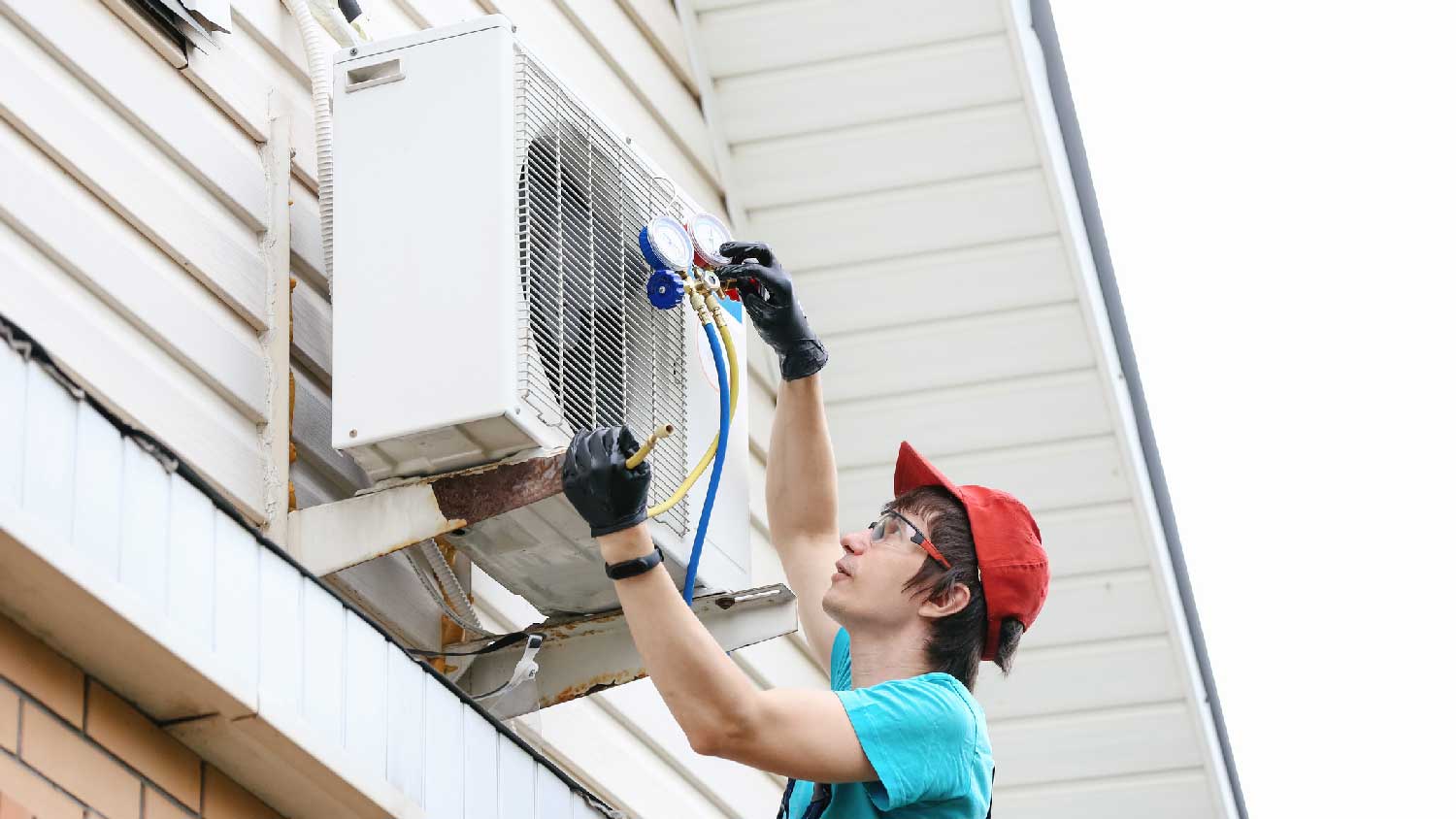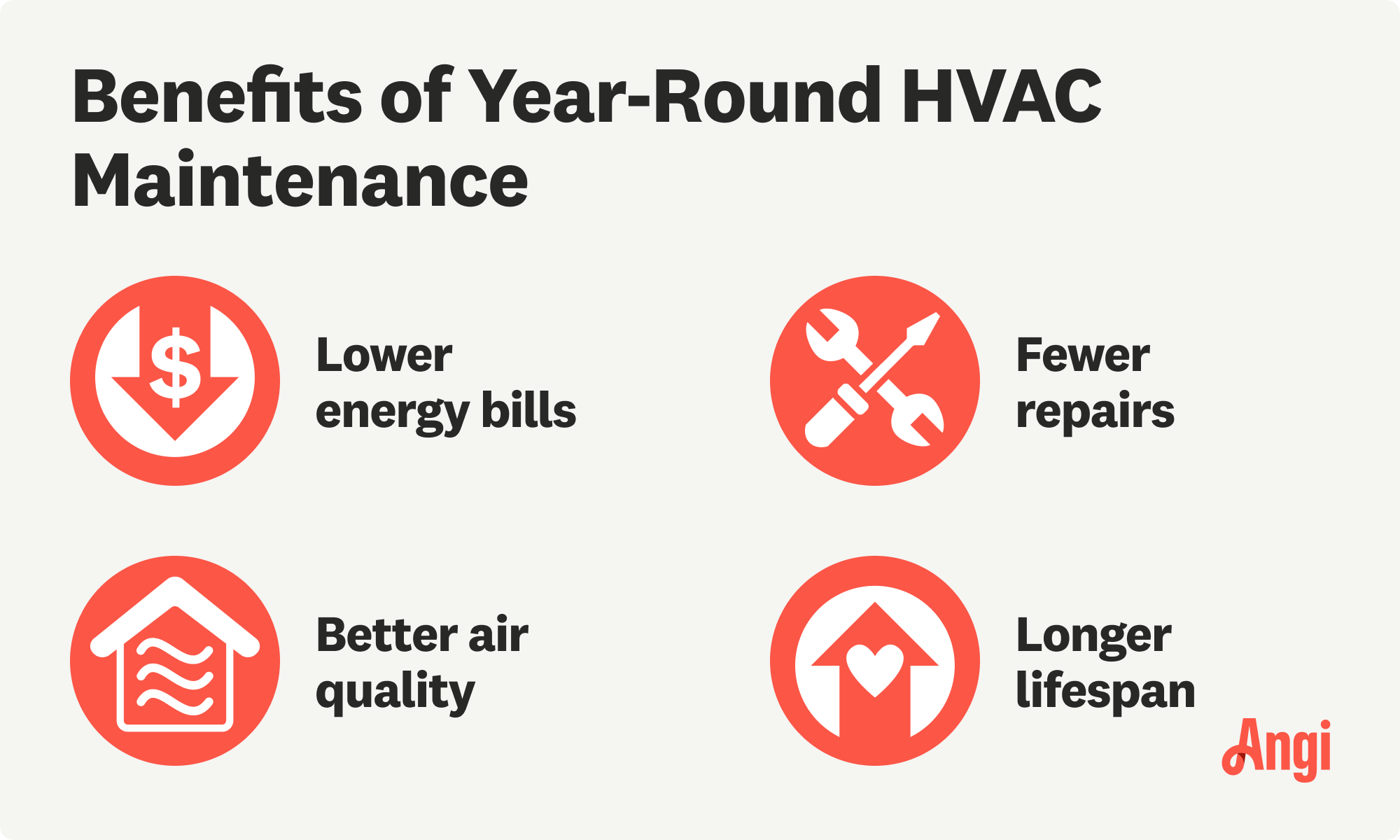
Explore factors influencing oil furnace replacement cost, additional expenses, and savings tips. Make an informed decision for a cozy home.
Keep an eye out for low refrigerant symptoms


Low refrigerant symptoms include hissing noises, ice on the evaporator coil, increased energy bills, and poor airflow.
You can add more refrigerant yourself or hire an AC repair specialist.
Having an HVAC professional inspect it regularly can prevent low refrigerant issues.
It’s crucial to have a properly working air conditioning unit to keep you comfortable in your home year-round. When your mini split starts showing signs of low refrigerant symptoms, you’ll likely be able to tell by the beads of sweat forming on your face.
If you’re unfamiliar with HVAC issues or don’t know if low refrigerant is causing the lack of cooling at home, our guide can help you identify common signs and decide when to hire an HVAC professional for help.
One of the first signs of low refrigerant is that your air conditioning unit is no longer cooling your space effectively. If you notice that your AC unit is running but the room or area still feels warm or humid, you may need to adjust your refrigerant levels.
If you feel warm or hot air blowing out of your AC unit, that’s another indication that your mini-split unit has low refrigerant. This is especially true if you have the temperature set low enough to blow cool air.
Unusually warm air is a surefire sign of a refrigerant leak, so you should have your unit inspected by an air conditioning repair specialist near you to determine the exact issue. These HVAC pros can pinpoint the problem, reset the refrigerant levels, and inspect the system for any additional issues.

Ironically enough, when refrigerant gets low, it can make your HVAC evaporator coil too cold and cause ice to form on top of it. If you notice extra condensation or ice forming on the evaporator coil, check the unit’s refrigerant levels to see if you need to top it off with more solution or call a professional for help.
Look below or around your AC unit to check for oily spots or stains that could indicate a refrigerant leak. Even if the leak is slow or gradual, it could significantly lower the amount of refrigerant needed to blow cool air into your home. Plus, a serious leak can be costly to fix and cause damage in the meantime. The cost to repair a coolant leak ranges from $225 to $2,000, depending on the type of unit and repair.
The EPA prohibits handling AC refrigerant without a license. This is one DIY project you shouldn’t try—having a licensed AC repair technician refill your AC refrigerant is the safest (and legal) option.
If the refrigerant is leaking or escaping your AC unit, it may make a hissing or bubbling sound when running. This sound is very noticeable, so if you hear it once or on a regular basis, you should hire an HVAC expert to inspect and repair it.
The air from your air conditioning unit should be steady and strong unless it’s low on refrigerant and unable to send cool air out as effectively. Try adjusting the temperature at different times to see how strong the airflow is, and call your local HVAC professional if you notice a weak stream of air coming out.
Was your last monthly electric bill much higher than usual with no explainable cause? Low refrigerant can cause your unit to run longer and extend its cycles to achieve the temperature you’ve set it at. This issue can result in higher energy consumption and increased utility bills, especially in seasons with extreme temperatures.

You can help keep leaks and low refrigerant issues at bay with the below steps so your wallet is free from costly repairs and your home stays cool.
Regular HVAC maintenance and cleaning can make the difference between paying for repairs or preventing them. Check the unit often for leaks, make sure the coils are cleaned regularly, and switch out air filters to make sure it’s running properly. Annual HVAC maintenance costs $100 to $550, which is well worth the cost to avoid major repairs.
A professional HVAC inspection on a yearly or bi-annual basis, especially before summer hits, can ensure you catch any red flags before the temperature climbs to 100 degrees and the unit no longer cools your space correctly. The average HVAC inspection costs $70 to $500.
If your air conditioning unit is outside, it helps to shield it from outdoor elements so it doesn’t get damaged. Whether you clear the surrounding area from objects or block the unit off with a barrier, the more measures you have in place to keep it in tip-top shape year-round.
Nathaniel and Austin did a really great job. They were very professional and were careful with our furniture.
I recently hired American Arborist for a large tree removal project, and I couldn’t be more impressed with the entire experience. From the first phone call to the final cleanup, their team was professional, efficient, and incredibly knowledgeable. We had a towering oak that was not only...
This man charged me $650 to juice up my air conditioner. He told me it had a leak, but could make it work for the next year, and I could look into getting it replaced next year. After spending all that money out still didn't work. I asked for $200 back, and he said he can't, even...
Robert also provides my lawn care. He pays attention to detail, is a pleasure to work with. I am so happy with the patio he built and the lawn care he provides. Very trust worthy and fabulous!
On time very efficient. I feel safe and secure now.
Very polite and punctual. Kept me informed of costs before he did the work. Charged me what he said he would and advised me on future needs. Very professional!
Reliable, Affordable and fast service. Job well done
Perfect service. Fast and courteous. Very effective.
Mr. Bylers did our cabinets and island for a large kitchen remodel about 7 years ago. The quality is top notch. Mr. Byler is a consummate professional and amazing cabinet maker. You will not be disappointed! Very highly recommend. We downsized this year and the hardest part was leaving the...
Absolutely the best! Super professional pays attention to the tiniest details and doesnt miss anything
From average costs to expert advice, get all the answers you need to get your job done.

Explore factors influencing oil furnace replacement cost, additional expenses, and savings tips. Make an informed decision for a cozy home.

If you’re having problems with your air conditioner’s condenser, it may be time for an upgrade. Learn about the cost to replace an AC condenser in this guide.

Find out the average humidifier repair cost, what impacts pricing, and how to save. Get expert tips to budget for your humidifier repair.

There are few things more important to homeowners than keeping their AC systems running. Use this guide on AC leak repair to keep your home cool and comfy.

Are you considering adding a whole-house humidifier to your home? Keep reading to learn the pros and cons of a whole-house humidifier.
How to clean your air conditioner depends on the unit type. Sometimes, a good hose-down is all you need if you have centralized AC. This guide can help with the cleaning process.